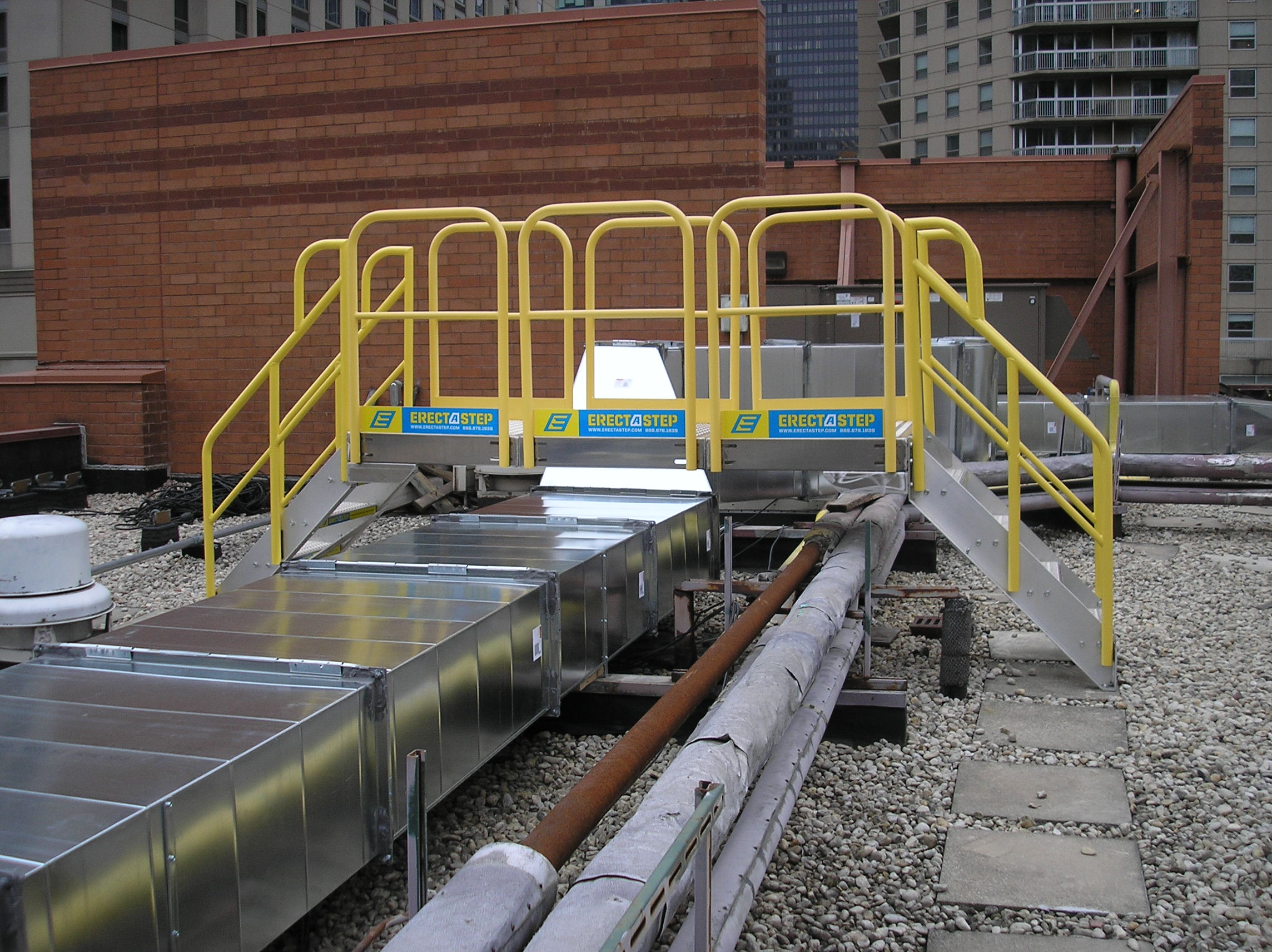
A few years ago, I looked out a Chicago hotel room window at the sub-roof of a skyscraper hotel. A long run of pipes and air ducts cut the roof in half, so that anyone who needed to work on it would have to walk a long way around or climb over. Since there were obvious points of maintenance and other equipment on both sides of the obstructions, I’m guessing that maintenance workers were doing exactly that. They needed a crossover, and a roof top isn’t the easiest place to install one, particularly post-construction.
How to Position Crossovers on Rooftops
Tags: Space Optimization
Posted in Safety & Ergonomics|
Crossing Conveyor Lines: The Options
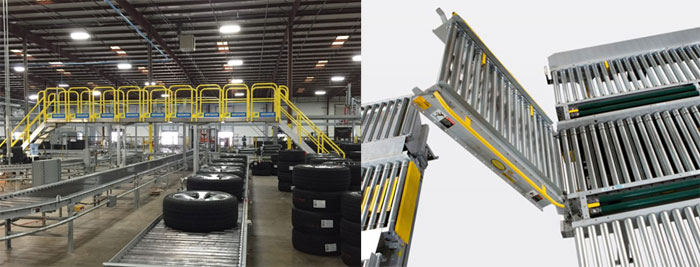
The extensive conveyor lines that snake through many distribution facilities allow operations to transport, buffer and direct loads in a way that takes the best possible advantage of space. These conveyor systems are essentially the core around which a lean, efficient material handling operation is built, but they also create barriers to people moving around the facility since they can block the flow of foot traffic.
Tags: Shoptalk
Posted in Conveyor Optimization|
Crossovers and Work Platforms: The Advantages of Modular
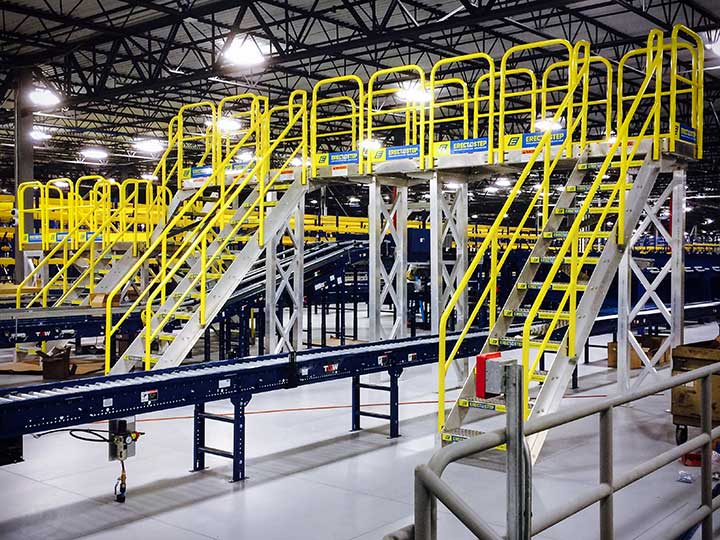
I recently attended training on a crossover and work platform product that continues to impress me for its flexibility and innovative engineering. Because of its modular design, it stands out from fabricated and manufactured products because it can morph and change as your needs change. There are times where a fixed, welded platform is fine, but it has hidden costs. Let’s examine those…
Tags: crossover, work platform, modular, Erect A Step, Perfect A Step, Space Optimization
Posted in Mezzanines & Industrial Platforms|
Comparison: Modular vs. Tubular Steel Crossovers
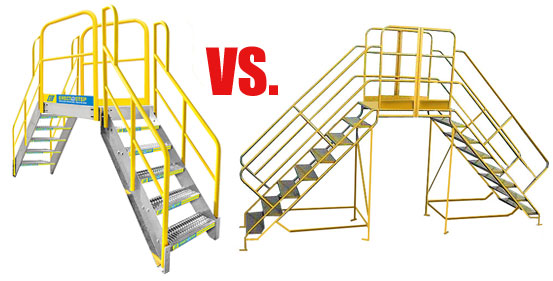
In many operations, things like conveyors or pipe runs or other machinery interrupt the flow of a work floor, and the obvious way to get around it is to erect a crossover. This is commonly done in larger scale conveyor systems with longer lines, but we also do them for other areas where going around the obstacle could take significant time, or where access is limited by other factors. The question is, what type of crossover best fits your needs?
Posted in Warehousing & Distribution|
Am I Wasting Time: is Cross-Docking a Viable Consideration for my Company?
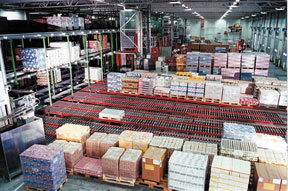
This article is the second in a series of articles on cross docking
In concept and on paper cross docking looks great, but, what about actual implementation? What kind of return do we get on this investment? The short answer is the implementation can be challenging. However, with planning, a committed team of upstream and downstream participants, and pilot programs, it can pay significant benefits.
Cross docking does not have to be complicated. Some, even today, execute cross-docking using human-readable paper documentation as the driver. As mentioned in the original brief, cross docking can cover a wide range of distribution activities. In one door and directly out the other is one approach. Many cross dockers also add value in the brief (hopefully) interval between receiving and shipping. Others send product to a temporary buffer in the interval, in many of these cases an automated system (mini-load, AS/RS, etc.) serves as the buffer.
Tags: Supply Chain, cross dock, Cross Docking, advance shipping notices, dock layout
Posted in Docks & Shipping|
Best Practices for Loading & Unloading Pallet Conveyors with Forklifts
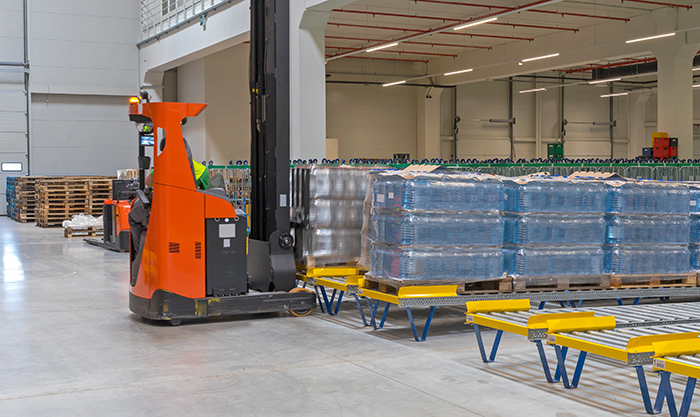
Loading and unloading pallet conveyors with forklifts is an everyday, all-day task.
Done right, it’s fast and efficient. Done wrong, product damage, collisions, injuries, and workflow bottlenecks happen. I’ve seen it in dozens of warehouses, even in highly automated operations, and most of them tend to bridge the shipping dock and the end conveyor lines with forklifts (these days, AGVs and AMRs often do this work). Pallets are large, heavy and in motion when they’re transported on conveyors. That combination of size, pressure and movement can result in damage or injuries when not properly controlled.
Tags: forklifts, conveyor safety
Posted in Conveyor Optimization|
Evaluation: Pallet Rack Storage Density, Access, Safety and Costs
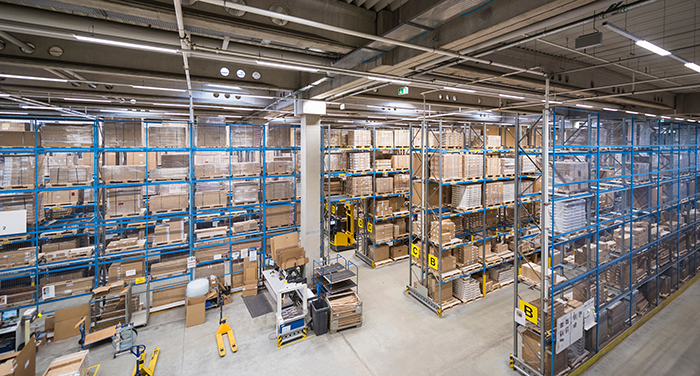
Just how many pallets can you store in a 100′ x 100′ area? It can range from not that many–X with selective racks that let you pick or place any pallet at any time–or “Y” using incredibly dense, using pallet flow or drive-in systems that restrict how and when you can access pallets. The balance between storage density and selectivity is always critical, but there are other factors in play: cost, efficiency and safety.
Tags: Space Optimization
Posted in Pallet & Warehouse Racks|
2025 Warehousing Survey

It started with a simple question: What’s your biggest operational challenge?
We didn’t expect leaders in manufacturing, warehousing, and distribution to respond with such clarity, but they did. And what we heard wasn’t vague. It was precise, urgent, and reflective of a sector that’s evolving in real time.
Posted in Industry Insights|
An Ergonomic Labor Strategy

As we’ve discussed previously, labor is hard to find these days – and it will get harder every year. Cultivating your labor pool eases the need (and high costs) of hiring, training and retaining workers. One of the best ways to do this is to optimize as much as possible for ergonomics.
As the saying goes, what you appreciate appreciates.
Posted in Safety & Ergonomics|
Automation and Space: Conveyor Layouts
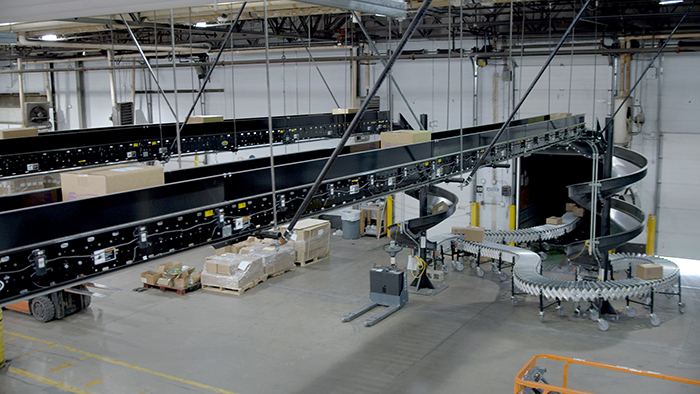
Above: Belt conveyors hang from the ceiling of a busy e-commerce distribution center, feeding shipping operations from a pick module while leaving the space below for traffic and shipping activities.
Conveyor systems transform picking, transport, assembly, and more, but occupy space in fixed positions. Tight layouts, low ceilings, facility structures and equipment compromise and compete for that square footage. Don’t worry, though—there are creative ways to work circumvent those limitations–and in some cases make them strengths.
Posted in Conveyor Optimization|



